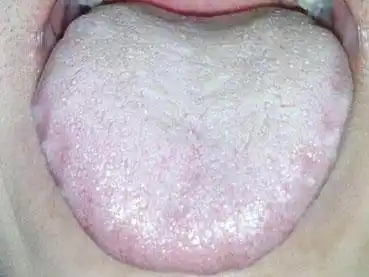
You’re brushing your teeth, going through your morning routine, when you stick out your tongue and see it—a thick, white coating, almost like a layer of frost or cottage cheese. It might brush off easily, or it might be stubborn. It could be accompanied by a bad taste in your mouth or a slight burning sensation.
It’s easy to dismiss it as just “morning mouth” or a need to brush more thoroughly. But when that coating is persistent, showing up day after day, it’s more than just a dental hygiene issue. It’s a telegram from your internal ecosystem. A white tongue coating? Your gut is overgrown… with yeast, and your entire system is out of balance.
Before you imagine something terrifying, let’s clarify. This isn’t about a dangerous infection spreading through your body. It’s about a delicate internal garden where one particularly opportunistic plant has started to take over.
The Garden in Your Gut: A Delicate Balance
Think of your digestive system, from your mouth to your intestines, as a beautifully complex garden. It’s home to trillions of bacteria and yeast, all living in a delicate balance. One of the most common residents is a yeast called Candida Albicans. In a healthy gut, this yeast is kept in check by the beneficial bacteria—the “lawn” of your garden.
But sometimes, the conditions in the garden change. The good grass gets weak, and the yeast, which grows like a weed, sees its chance. It starts to overgrow.
This overgrowth isn’t confined to your intestines. It can manifest anywhere in the digestive tract, and one of the most visible places is your tongue, a condition known as Oral Thrush. That white coating is essentially a colony of yeast having a party on the surface of your tongue.
Why is the Garden Overgrown? The Common Culprits
So, what weakens the “lawn” and allows the “weeds” to take over? For the over-50 crowd, the reasons are often linked to the realities of midlife health management.
- The Antibiotic Effect: This is a classic cause. Antibiotics are like a broad-spectrum weed killer—they wipe out the bad bacteria causing an infection, but they also devastate the good bacteria in your gut. With the competition gone, yeast can proliferate unchecked.
- The Sugar and Carb Feast: Yeast loves sugar and refined carbohydrates (white bread, pasta, pastries). A diet high in these foods is like pouring fertilizer on the yeast, encouraging it to grow out of control while harming the beneficial bacteria.
- The Stress Connection: Chronic stress raises cortisol levels, which can damage the gut lining and suppress the immune system. A weakened immune system is less able to keep opportunistic organisms like Candida in check.
- Medications and Health Shifts: Common medications like steroids (e.g., prednisone) and even some acid reflux drugs can disrupt the gut’s balance. Furthermore, health conditions like diabetes, which cause high blood sugar, create an ideal environment for yeast to thrive.
The Domino Effect: It’s Not Just About Your Tongue
While the white tongue is the most visible sign, a systemic yeast overgrowth can have other subtle but frustrating symptoms:
- Chronic fatigue and brain fog
- Recurring bloating and gas
- Strong sugar and carb cravings (the yeast is demanding to be fed!)
- Recurrent fungal infections like athlete’s foot or jock itch
Your Action Plan: Restoring the Balance
Seeing a persistent white coating on your tongue is your body’s way of asking for a system reset.
- See Your Doctor or Dentist: Rule out other causes. They can easily diagnose oral thrush and may prescribe an antifungal mouthwash or lozenge to clear the immediate overgrowth on your tongue.
- Become a Sugar Detective: This is the most powerful step you can take. Dramatically reduce your intake of refined sugars, white flour, and alcohol. You are essentially starving the yeast.
- Feed the Good Bugs: Incorporate more probiotic-rich foods into your diet, like plain yogurt with live cultures, kefir, kimchi, and sauerkraut. These reintroduce beneficial bacteria to your gut.
- Nourish the “Lawn”: Eat plenty of prebiotic fibers, which are food for your good bacteria. These are found in foods like garlic, onions, leeks, asparagus, and bananas.
- Manage Stress: This isn’t just a platitude. Finding healthy ways to de-stress—walking, meditation, a hobby—is a direct investment in your gut health.
A white tongue coating is a visible flag from your inner world. It’s a sign that the delicate balance of your gut garden has been disturbed, allowing yeast to overgrow. By listening to this signal and taking steps to starve the “weeds” and reseed the “lawn,” you’re doing more than just clearing your tongue. You are taking a profound step to support your digestion, your energy levels, and your overall vitality, ensuring your internal garden is a place of health and harmony for years to come.